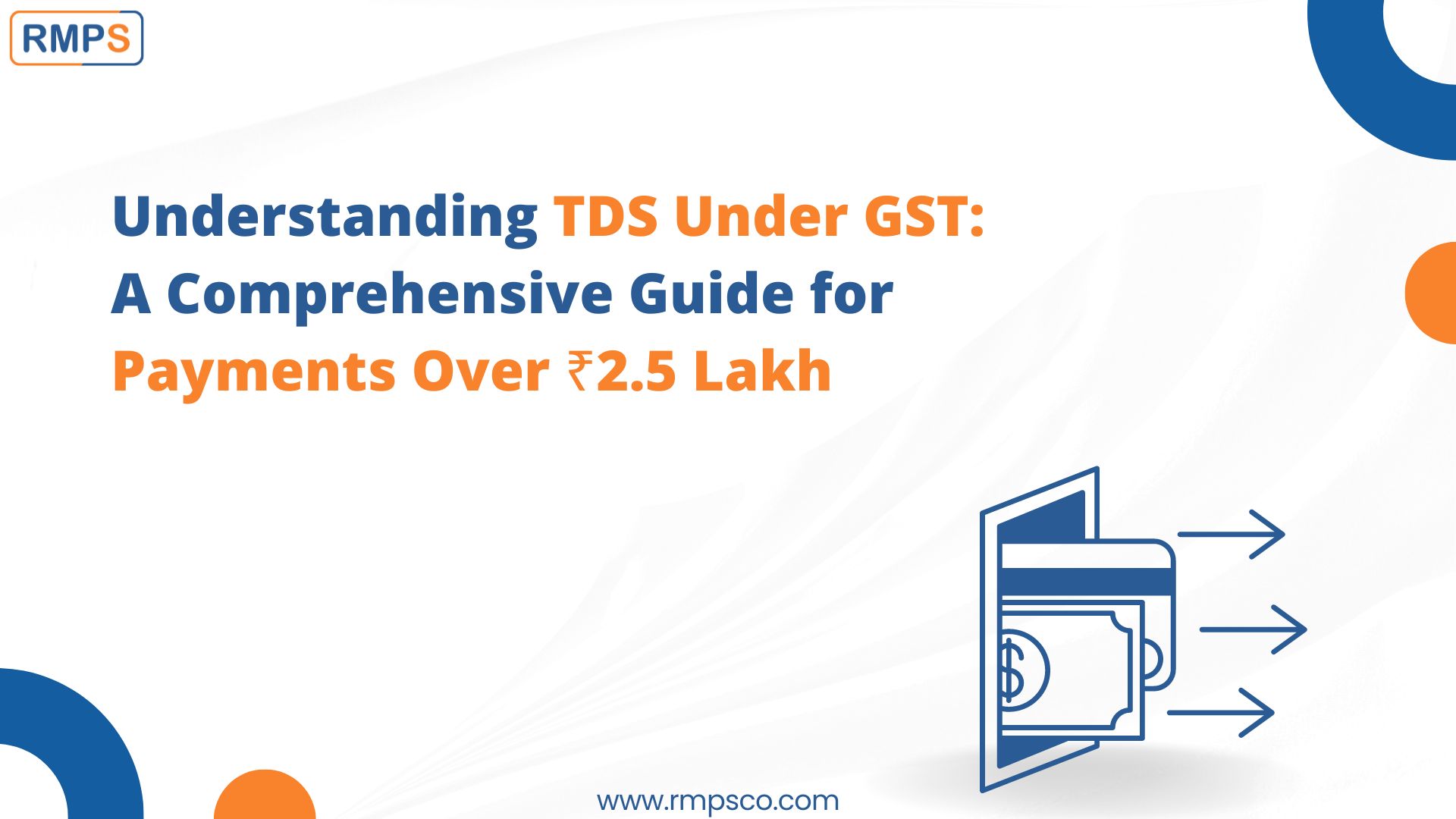
Introduction:
Tax Deducted at Source (TDS) under GST ensures effective tax collection and reduces tax evasion. As per Section 51 of the CGST Act, government departments and certain agencies must deduct TDS on payments exceeding ₹2.5 lakh. This guide will explain how TDS under GST works and provide easy steps to follow for compliance.
What is TDS in GST?
TDS under GST involves deducting tax when making payments to suppliers. This system allows the government to collect tax directly at the source, ensuring compliance. For intra-state transactions, 1% CGST and 1% SGST are deducted, while for inter-state transactions, a 2% IGST deduction applies.
Key Points to Remember:
- TDS Rate: 2% of the taxable value, excluding GST.
- Intra-state supplies: 1% CGST and 1% SGST.
- Inter-state supplies: 2% IGST.
Who Needs to Deduct TDS?
The following entities must deduct TDS under GST:
- Central and State Government Departments
- Local Authorities
- Public Sector Undertakings (PSUs)
- Notified Government Agencies
These organizations must deduct TDS when their payment to a supplier exceeds ₹2.5 lakh, excluding GST.
TDS Threshold Limit:
You must deduct TDS when the contract value exceeds ₹2,50,000. However, this calculation excludes GST. Instead, TDS is deducted based on the taxable value of goods or services.
Example of TDS Calculation:
Let’s use an example to clarify this.
A government department hires a company for repair work with a contract value of ₹5,00,000, and GST at 18%.
- Value of services: ₹5,00,000
- GST (18%): ₹90,000
- Total payment: ₹5,90,000
- TDS deduction (2% of taxable value): ₹10,000
- Final payment: ₹5,80,000 (after deducting TDS)
How Location Affects TDS:
The location of the supply determines how TDS is deducted. For intra-state supplies, 1% CGST and 1% SGST are deducted. In contrast, for inter-state supplies, 2% IGST is deducted.
For example:
- If a government office in Odisha buys goods from a supplier in West Bengal for a factory in Odisha, no TDS applies.
- However, if the goods are for a factory in Assam, the government will deduct 2% IGST.
Filing TDS Under GST:
You must file GSTR-7 each month if you are responsible for deducting TDS. This form records all TDS deductions. Additionally, you must deposit the deducted amount with the government by the 10th of the following month. For example, if you deduct TDS on April 8, you must deposit it by May 10.
Issuing the TDS Certificate: GSTR-7A:
Once you deposit the deducted TDS, the GST portal generates a TDS certificate (Form GSTR-7A). You must provide this certificate to the supplier within 5 days of the deposit. Failing to provide the certificate on time results in a penalty of ₹100 per day, up to ₹5,000.
Penalties for Non-Compliance:
Failure to comply with TDS rules leads to penalties:
- Not deducting TDS: A penalty equal to the amount that should have been deducted.
- Late deposit of TDS: Interest of 18% per year on the delayed amount.
- Failure to issue the TDS certificate: ₹100 per day, capped at ₹5,000.
- Incorrect deduction: Penalties apply based on the shortfall.
TDS Refund Process:
In cases where you deduct excess TDS, you can request a refund through the GST portal. Typically, the refund process takes about 60 days if the claim is verified and approved. However, if the supplier has already received the excess TDS, you will not receive a refund.
Conclusion:
Understanding how TDS works under GST is essential for avoiding penalties and ensuring smooth operations. By deducting and depositing TDS on time, and issuing the necessary certificates, you can stay compliant and minimize risks.
LinkedIn Link : RMPS Profile
This article is only a knowledge-sharing initiative and is based on the Relevant Provisions as applicable and as per the information existing at the time of the preparation. In no event, RMPS & Co. or the Author or any other persons be liable for any direct and indirect result from this Article or any inadvertent omission of the provisions, update, etc if any.
Published on: September 27, 2024
